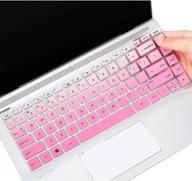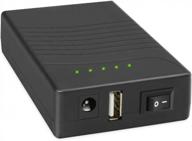
Review on Samsung Galaxy S20 FE (128GB, 6GB) 6.5-inch 120Hz AMOLED, Snapdragon 865, IP68 Water Resistant, Dual-SIM GSM Unlocked (Global 4G LTE) SM-G780G/DS International Model with Wireless Charger Bundle in Navy by Adisorn Khamkon ᠌

A wonderful product, it's nice to use.
Since I was feeling down in February and wanted to make a change, I decided to upgrade my phone's camera to one with optical zoom and a wide-angle lens so that I could take clear photos even in low light (I need to photograph dark, cramped spaces for my job). The new phone has all the features I was looking for: it takes clear photos in the dark, has a wide field of view, prompts you to turn it on (a feature I appreciate), and works well at night. Also, a chipset with a more rapid modem. Modem? I had a snapdragon 720G, which boasts a maximum 4G download speed of 800 Mbps (in theory; in practice, it's closer to 1,500 kbps to 2,000 kbps), but the speed here is closer to 2,400 kbps to 3,100 kbps (somewhere they write that 1,650 megabits per second, and somewhere - what 3,000 megabits per second is), and I even managed to catch the download speed in 4G at home, which was 300 My dacha is my office, and I do a lot of my Internet distribution business there. This is a flagship chipset, therefore it should have nearly the fastest modem available, thus if there were speed records in 4G of more than 1 Gbps, I might just see them someplace. Fast modems are standard in 5G phones, therefore it's logical to purchase one for 4G as well. In general, after using a xiaomi device, I find that Samsung's user interface is less appealing, its fingerprint scanner less practical, its display less reassuring, and its build quality less robust than that of a xiaomi device. However, this time around I was unable to locate a device costing less than $20,000 that included both an optical zoom and a dex mode, let alone a high-speed modem. I had previously ordered a redmi note 11 pro 5G on Ali on the day of its release, but the company first delayed shipment, then dropped the price by two thousand dollars, which I found disrespectful.
- Excellent screen, it doesn't look like a screen at all; it might easily be mistaken for a picture on paper sitting on the table. The low-frequency sound is bass-heavy, the high-frequency sound is crystal clear and incredibly rich, and the high-frequency sound is emitted only from the phone speaker (which is also crystal clear and incredibly rich), resulting in conventional stereo sound. It's not overly bassy or tinny like some jbl gear, and the highs don't squeak until they're intentionally included in the mix; otherwise, the sound is very neutral. The low frequencies on my wife's Poco X3 NFC are much more pronounced and resemble those of JBL headphones, which is why I prefer listening to music on her phone. I previously used a redmi note 9 pro, which had a 6.67-inch screen, and I noticed no difference between the two in terms of physical size. The UI may seem 5-10% faster than on the aforementioned phones, although this difference is negligible in practice. The Dex mode is a fantastic addition; it allows you to use your phone as a complete replacement for a PC for entertainment purposes by connecting it to a monitor or TV through miracast or a hdmi adapter, a computer through USB or wifi, and displaying its contents on the larger screen in a manner similar to Windows. Everything runs in Windows, and the phone screen can be used as a touchpad. When compared to the 64 megapixels found in xiaomi smartphones, the images captured by the device's primary camera are noticeably lower in quality. With just 12 megapixels, the image is dimly lit and lacks detail. The Samsung takes considerably better images at night, but this is due to the software; Samsung made a concerted effort to improve this. These are not slanted binoculars; rather, they have a 3x optical zoom that is both fully operational and programmably extendable, and a 10-12x zoom that may be used with confidence. This zoom was the main reason I purchased it; higher megapixel counts (64 or 108) simply do not produce the same results. Optical stub support for 4K video recording at 60 frames per second. However I was able to purchase it for only $30,000 despite its advanced age.
- When 8k televisions are now on the market, it's clear that a 12-megapixel camera is woefully inadequate; the business as a whole faces a serious challenge as a result. Photos taken in full darkness with the 12 megapixel main camera in night mode are surprisingly well exposed and sharp. The 64 megapixel camera of the Redmi Note 9 Pro achieves an ISO of more than 50,000, but low-light shots are noticeably less sharp. Those. Samsung cut costs significantly on the photosensor but performed impressive programming feats. Although charging durations with 33W chargers are not often long, this is a significant slowdown in comparison to the redmi and mid-range poco. There aren't many options for cases; yes, you can buy a throwaway one for a couple hundred dollars, but standard cases from brands like dux ducis and nillkin are hard to come by, and they only come in black and dark blue (I have an orange phone; why shouldn't it be orange?). The orange cover isn't available in the original covers, and they're incredibly pricey. The sensor in the power button is so sensitive that with a light touch, the phone unlocks; nevertheless, after pressing the button and moving on to the screen, this becomes inconvenient. I've grown accustomed to double-tapping the screen to activate it; after that, he usually knows my face (though only about 70% of the time; that's weird, as I don't have a split, for some reason):). The options menu is quite muddled, to the point that you may spend 5 minutes looking for a specific option.
New products
Comments (0)
Similar reviews
Top products in 📱 Cell Phones

Unlocked Apple iPhone 7, 📱 32GB, Black (Refurbished) - Enhanced for SEO

318 Review

💎 Renewed Samsung Galaxy S8 64GB Coral Blue Fully Unlocked Phone

383 Review

Renewed Samsung Galaxy A50 Verizon Smartphone in Black with 64GB Storage

569 Review

💫 Renewed Samsung Galaxy A71 5G Fully Unlocked (128GB, Prism Cube Black)

354 Review
Another interesting products

Keyboard Cover For HP Pavilion X360 14 14-Dk 14M-Dh 14-Dq/Dh 14-Fq 14-Ce/Cf 14T-Dh200 14-Dq0070Nr 14-Fq1025Nr 14-Dq0011Dx/Dq0004Dx/Dq0002 14-Dh2011Nr Fq1097Nr 14T-Dq300 14Z-Fq000 14-Cb185Nr, GPink

39 Review

Rechargeable 12V 3000MAh Lithium Battery Pack: Power Bank For LED Strip, CCTV Camera & More

43 Review

Sennheiser HD 206 Closed-Back Over Ear Headphones - Discontinued Model

195 Review

Perixx Peripad-202H Black Wired Numeric Keypad With X-Scissor Keys, 2 USB Hubs, And Tab Key For Enhanced Productivity

44 Review


